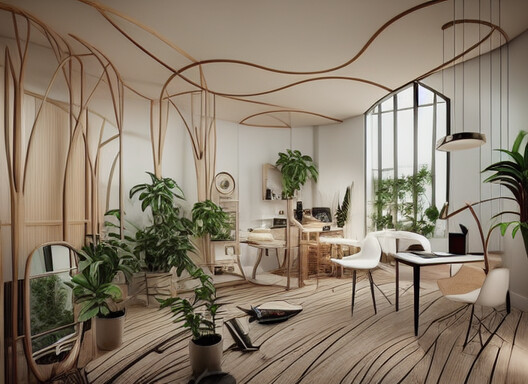
In an era of rapid technological advancements, artificial intelligence (AI) has emerged as a transformative force across various industries. The field of interior design is no exception, raising questions about the potential of AI to revolutionize this creative profession. As Dubai interior designer continue to shape the city’s iconic skyline, it is essential to explore whether AI will eventually replace human expertise in this field.
The Evolution of Interior Design
Interior design is a profession that harmoniously blends aesthetics and functionality to create spaces that reflect the client’s vision while ensuring optimal use of the available space. Dubai, known for its cutting-edge architecture and opulent interiors, has a vibrant community of interior designers who contribute to the city’s distinctive ambiance.
The Rise of AI in Design
Artificial intelligence has made remarkable strides in recent years, encompassing machine learning, computer vision, and natural language processing. These technologies have enabled AI to assist in various stages of the design process. From generating design concepts to predicting trends, AI has the potential to streamline and enhance the work of interior designer in Dubai.
AI-Assisted Design Concepts
AI can be a valuable tool for generating initial design concepts based on input criteria such as client preferences, spatial constraints, and cultural influences. Machine learning algorithms can analyze vast databases of design styles and precedents, offering inspiration to designers and suggesting novel ideas. However, the role of human creativity in curating unique experiences for clients remains irreplaceable.
Automation of Repetitive Tasks
One of the areas where AI can significantly impact interior design is through the automation of repetitive tasks. This includes tasks such as creating detailed floor plans, generating material palettes, and estimating project costs. By offloading these routine activities to AI, the designers can focus their energy on higher-level creative decisions and client interactions.
Enhancing Design Visualization
Design visualization plays a pivotal role in conveying ideas to clients. AI-powered rendering tools can transform hand-drawn sketches into photorealistic images, allowing clients to better understand the proposed designs. Additionally, virtual reality (VR) and augmented reality (AR) technologies powered by AI enable clients to virtually walk through spaces before construction begins, enhancing their engagement and minimizing potential misunderstandings.
The Human Touch in Creativity
While AI brings a myriad of advantages to the field of interior design, it cannot replicate the human touch that defines creativity. Interior designers in Dubai infuse projects with cultural nuances, emotional connections, and personalized experiences that resonate with clients on a deeper level. AI may be able to mimic certain design styles, but it cannot replicate the cultural sensitivity and emotional intelligence that human designers bring to the table.
Navigating Cultural Contexts
Dubai’s interior design landscape is uniquely diverse, reflecting a fusion of traditional Arabic aesthetics and modern influences. Navigating this intricate cultural context requires a deep understanding of local traditions, materials, and design philosophies. AI may lack the contextual awareness necessary to create designs that seamlessly integrate with Dubai’s rich cultural tapestry.
The Collaborative Future
Rather than viewing AI as a replacement, many of the designers see it as a collaborative partner. AI’s ability to process vast amounts of data and generate insights can aid designers in making informed decisions. By embracing AI as a tool, designers can leverage its strengths to enhance their creative processes while retaining the human touch that makes their work distinctive.
Ethical Considerations
As AI continues to evolve, ethical considerations come to the forefront. Questions about data privacy, algorithm bias, and ownership of AI-generated designs are crucial to address. Maintaining a balance between AI assistance and human ingenuity requires a thoughtful approach to ensure that the technology serves the best interests of both designers and clients.
The Unpredictable Future
Predicting the complete takeover of interior design jobs by AI is a complex endeavor. While AI’s capabilities are impressive, the multifaceted nature of interior design extends beyond the realm of algorithms and data. The profession’s evolution will likely involve a dynamic interplay between AI-driven efficiency and human-driven innovation.
Conclusion
The journey of designing continues to be shaped by technological advancements, with AI offering promising opportunities to enhance various aspects of their work. While AI can automate routine tasks and aid in design visualization, it cannot replicate the cultural insight, emotional resonance, and creative flair that human designers bring to the table. The future of interior design in Dubai is likely to be a harmonious collaboration between AI and human expertise, where technology augments creativity rather than replaces it. As this synergy unfolds, Dubai’s skyline will continue to bear the unique signature of both AI and the talented interior designers who shape its aesthetic landscape.


